
35 minute read
BELENTY’S LOVE
from OTK Issue 03
by One To Know
Vegan Voracity
Every dish comes with a side of love at Belenty’s Mexican Vegan Restaurant.
Advertisement
By Jennifer Casseday-Blair Photos by Agustin Gonzalez
In a town that prides itself on great
steak, establishing a customer base at a vegan Mexican food restaurant was a bit of a challenge, but not one that owner Bélen Hernández wasn’t up to. Coming to Texas from Tamaulipas, Mexico, in 2000, Bélen once ran popular taquerias such as Tacote in Glen Rose and Montes in Hillsboro.
Her inspiration behind Belenty’s came when her son adopted a vegan lifestyle after he watched a documentary about how chicken meat is processed. Bélen set out to prove that vegan doesn’t have to mean bland, and in 2018 she opened Belenty’s in Granbury. “There were many people coming to eat at our restaurant in Granbury from Fort Worth. They kept asking us to open another location, so we did,” Bélen says.
She launched another location on Fort Worth’s beloved Bluebonnet Circle, and the space is painted in bright, bold colors accented with a cozy patio. For breakfast, guests can order dishes such as the Cactus Plate ($9.75) with nopales, tofu, tomatoes, onions and jalapeños or a range of vegan taco and burrito options. A popular lunchtime dish is the Portabello Asada Tacos Plate ($13.75) with three tortillas liberally filled with grilled mushrooms, onions, avocado, cilantro and tofu cream. When asked which dish is her favorite on the menu, Bélen says, “I’m Mexican, so I love my tacos. Right now, the pastor tacos are my favorite.”
Bélen prepares nearly everything from scratch. “We will be adding a lot of new dishes and plan to create a special menu for customers with diabetes or high cholesterol. We are trying to teach people that food can heal you from the inside,” she says. Bélen and her husband and co-owner, Marcus Hicks, are already eyeing markets like Dallas, Waco and Austin for their next opening.
Bélen promoted Belenty’s mainly through word-of-mouth and social media. “There really hasn’t been anything at all negative about working with my husband. We are together every day, and he is incredibly supportive.”
Belenty’s Green Smoothie
1 green apple 4 pieces of celery sticks 1 cup of pineapple
½ lime (only the juice)
1 cup of spinach
This smoothie has great benefits. It lowers your cholesterol, helps with high blood pressure and to lose weight, as well as with digestion problems. It’s amazing with all natural, organic ingredients,”
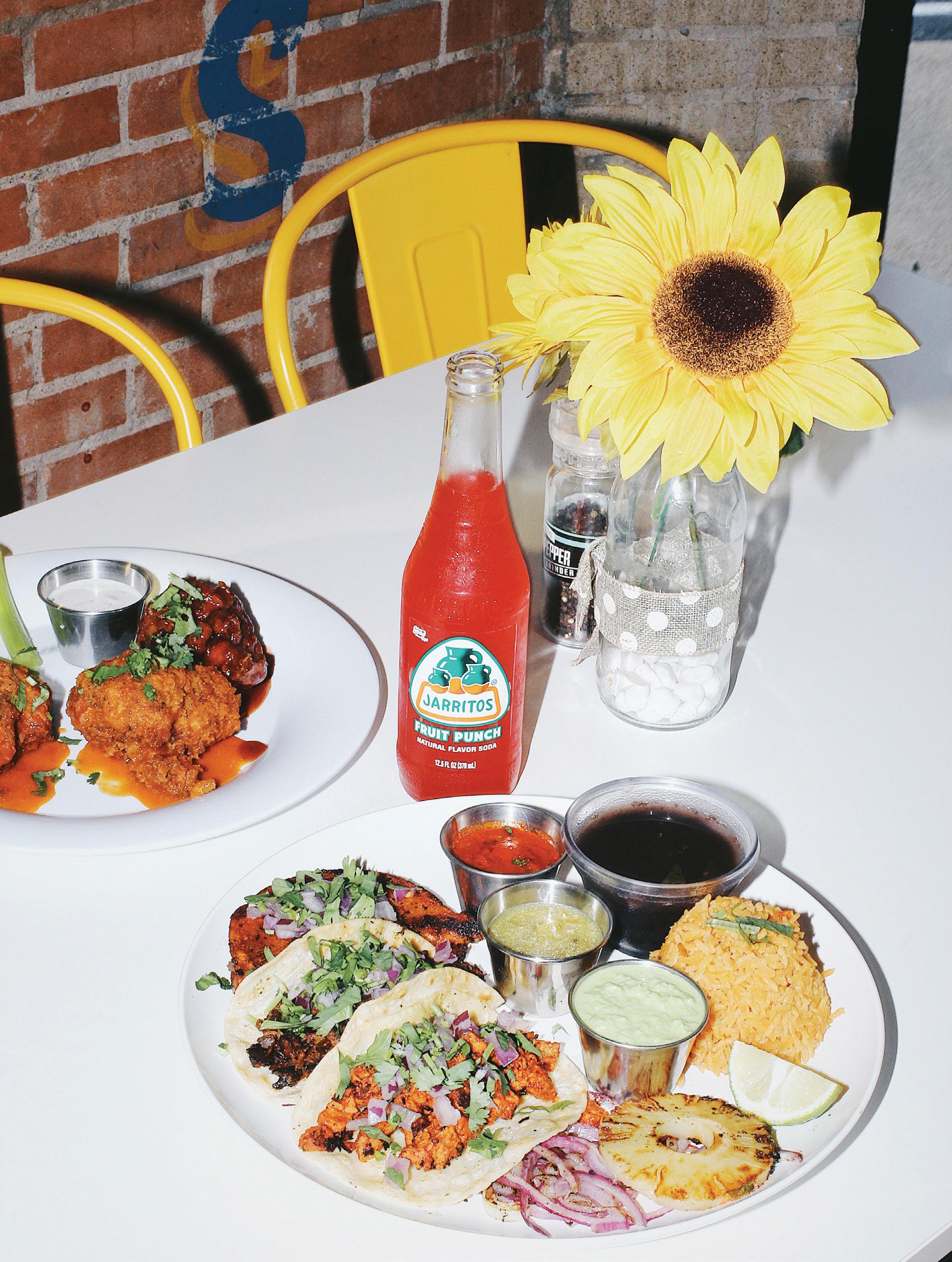
Hernandez says.
Belenty’s Love Mexican Vegan Restaurant
3516 Bluebonnet Circle
belentyslove.com

Mixed media and Brenda Ciardiello’s twofold meanings
By Jocelyn Tatum
In the cover story, Alexis Ruddock spent a year learning how to recreate the perfect cake for her son. But in the midst of all the baking kits, pastry tools, spatulas, cookie sheets and thousands of cupcakes, she recreated her life.
Cover artist Brenda Ciardiello named the cover artwork “Recreate,” and that is exactly what our story that writer Shilo Urban so beautifully captured is about — a Filipino immigrant raised in brothels who came to the U.S. to start over, finding healing and starting over through baking. “There are all of these contrasting images — like serious darkness then light, then bright pink and then black,” Brenda says. Brenda found Alexis’ story so interesting because she came out of such a dark storm to a place where her business and life revolve around the most lighthearted occupation in some ways, one cupcake at a time.
Brenda wanted to create something that illustrated a self-made, selfcreated life. “Skies are the symbol of hope, the future or moving forward, so this painting with this ocean with a pink sunset and clouds behind it symbolized her moving into the future, and that pink, I just really associated with her,” Brenda says.
The painting looks unfinished in the foreground where the hand rests. That’s on purpose. And the background is rockier and choppier, yet it moves into this sunset on the horizon. “This idea of reaching into your destiny and creating what you want it to be. No matter how it begins, you make it what you want it to be. So even though this landscape started as this rocky, choppy ocean, it turns into this warm promising horizon,” she says. The hand represents Alexis and her presence in life recreating it.
The hand is also Brenda’s hand as the Hispanic woman creating this painting and her own destiny. Brenda paints hands a lot because, for her, they have a lot to do with self-determination. Brenda also loves nature, and another theme in her paintings explores people’s interactions with nature.
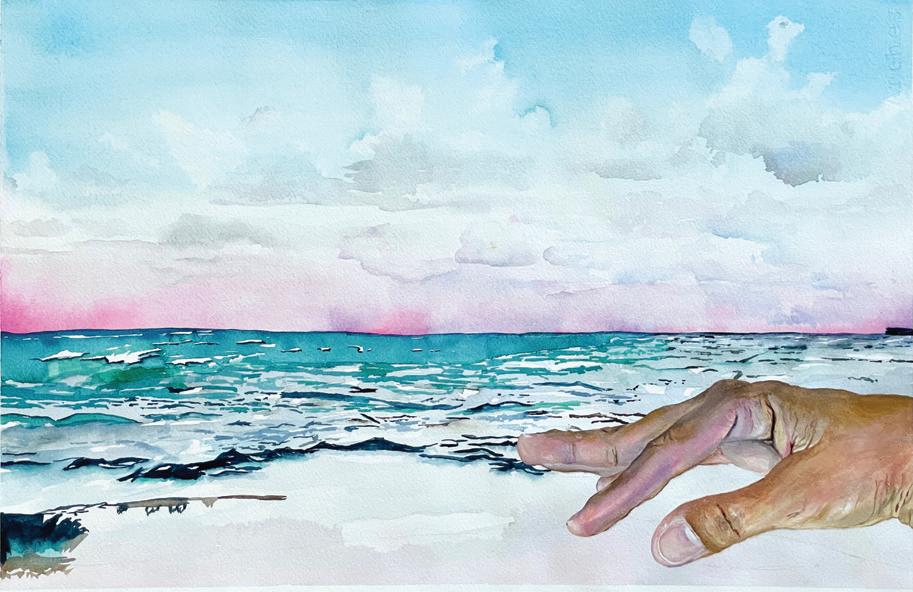

“It is my brown Mexican hand in these natural settings, but it is also the artist’s hand creating, this assertion of identity, being proud of who I am, and I am demonstrating that Black and Brown people are just as natural as white people, which seems obvious, but the cannon of the art world doesn’t really depict that,” Brenda says.
Hence, there is a twofold explanation in this painting. On a deeper level, this work THE MEDIUM IS A WATERCOLOR also represents herself, her sons and people AND OIL, BUT JUST THE HAND of color in general in natural settings. “I do IS PAINTED IN OIL. “I did that with feel in a sense that Black and Brown bodies the piece in The Hotel Dryce because I like are never represented at leisure in nature. It that tension between oil and water, which is Mexicans or slaves working in a field but don’t mix,” Brenda says. She challenges those not at leisure appreciating nature,” she says. looking at her art to think about how we
For artwork commissioned by Hotel Dryce, interact with nature. Is it in a harmonious way Brenda painted this beautiful image of her in light of climate change? “They are maybe 8-year-old, Black adopted son dipping his perceived as incompatible, the medium and hands into a pond with lily pads. An unusual our global discourse with climate change; are image given Black and Brown people are we doing all we can to mix with nature?” Again, usually depicted toiling away, she says. The the artwork’s medium has twofold meaning for same concept. “We are not just headlines and these tropes the media presents,” she says. Brenda. She challenges viewers to think about how Black and Brown people are traditionally perceived in nature in art, which is usually in
Tying this back into the article, Brenda toil. “On another level, these brown hands are says Alexis is from a country that has a the oil and the water, which depicts how Brown lot of poverty and prostitution, not willful people are not mixed with nature in the fine prostitution, and she faces presumptions of arts world.” her capabilities as a Filipina woman, which - Brenda Ciardiello Brenda observes run deep internationally. Stereotypes. We all are familiar with those painful sweeping generalizations that erase identities in one stroke. “This could very well be her hand, and she is taking back control of this stereotype the world may want to give her as a woman growing up in a brothel in a Third World country, but with sheer determination she is living the American Dream,” Brenda says.
The hand is also your hand, the woman who reads this magazine and has the power to recreate your journey moving away from whatever darkness you survived.

Each issue we ask a local artist to design our cover, and we write about what inspired her design here in the Craft section of OTK Magazine. If you are interested in designing one of our covers, email art@onetoknowmagazine.com.


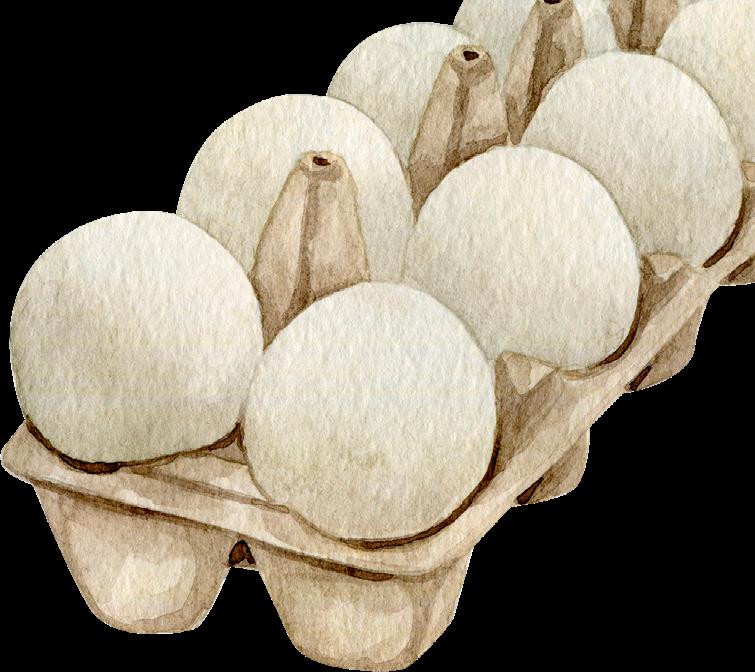


Her Journey to Now Sweet How It Is

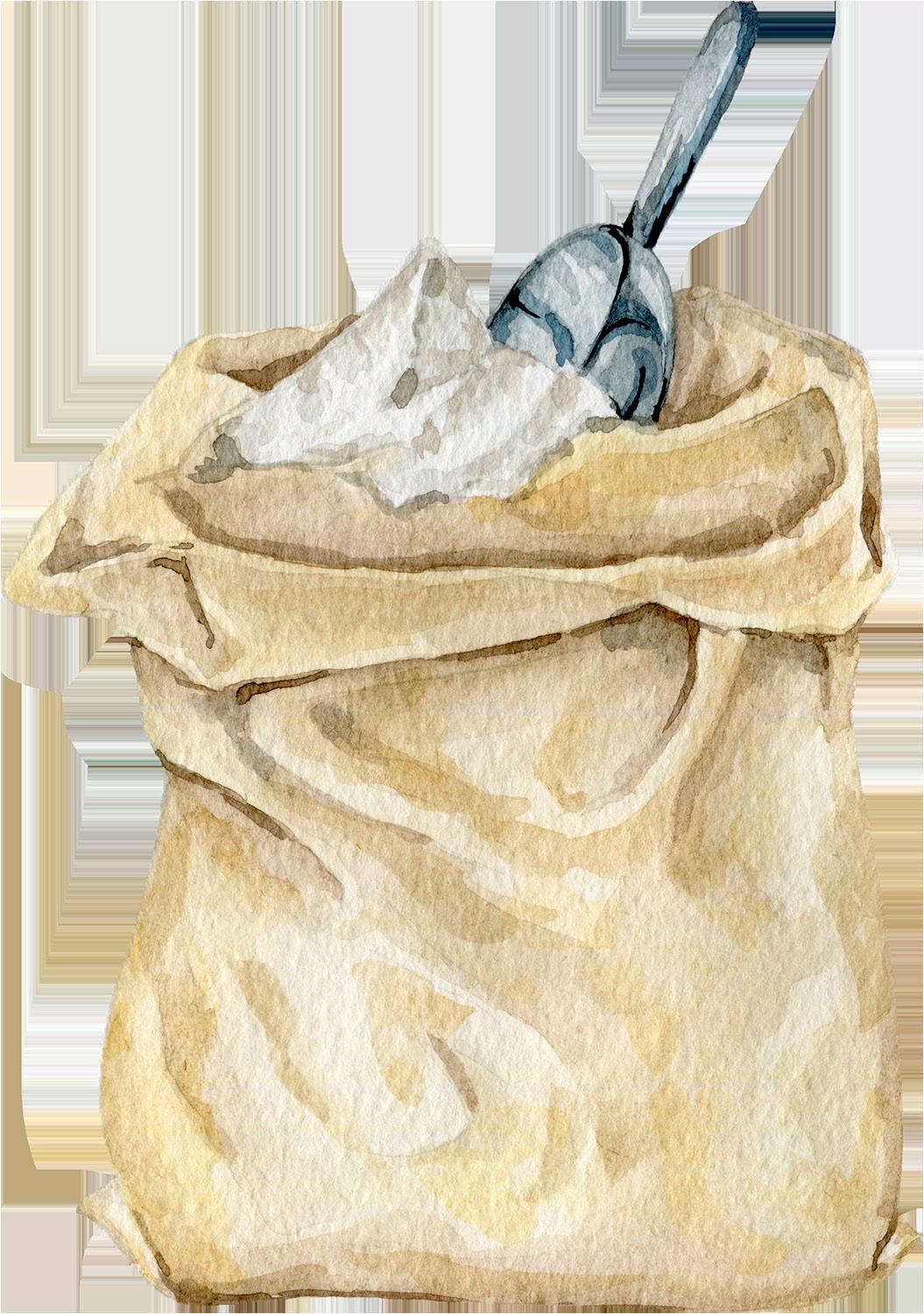

From a Filipino brothel to the Food Network, one woman perseveres to savor pastry success
By Shilo Urban Photos by Amber Shumake

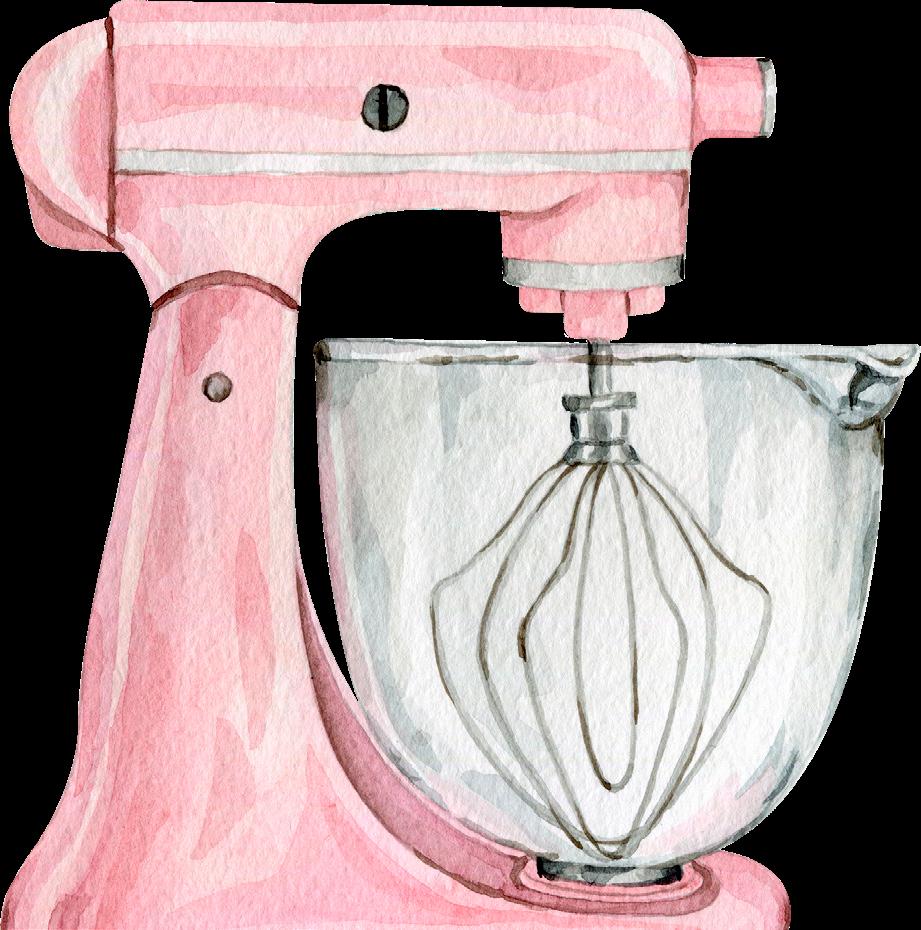

Alexis Ruddock turns flour and sugar into works of art, crafting flawless cupcakes and cookies with adorable decorations. Dainty pink flowers and teeny-tiny succulents bloom on her desserts. Swirls of frosting find new lives as snowy cabins and pretty springtime forests. It’s a world of happy unicorns and rainbows, of candy sprinkles and cake pops that are (almost) too cute to eat.
A self-taught chef and mother of two, Alexis runs the award-winning organic bakery Sweet Frosted Confections from her home in Aledo. She has appeared on Food Network multiple times. Her delicious treats attract an impressive clientele, from Pepsi and Microsoft to the Texas Rangers and Fort Worth Zoo. She teaches cookie decorating at corporate team-building events and has shipped her in-demand sweets around the planet.
But her path to success has not all been strewn with fondant blossoms and roses. Raised in a brothel in the Philippines, she has survived abandonment and abuse on a roller-coaster journey that has swung from driving a Porsche to living in her car. She has picked herself up again and again to overcome challenges and create a better life for her family.
As a child, Alexis thought her home was normal. Until she was 7 years old, she lived with her parents and sister in a windowless room under the stairs of a large “hotel” called Fountain of Youth. Many young women lived in the building as well. Alexis watched them style their hair and makeup, donning skimpy outfits and red hearts with numbers on them. She played hide-and-seek with her cousins in the bedrooms that lined the long hallways; there were dozens to choose from.
But her favorite was the Cupid Room, whose heart-shaped decor and mirrors charmed the little girl. “I remember that room very well,” Alexis says. “It had a giant blue waterbed and a window overlooking the street.” There was also a hot tub. “It was big enough for a few people. But I never thought, oh, that’s gross. We didn’t have a swimming pool, so we’d go swimming in there.”
Every evening, the women gathered on the blind side of the lobby’s two-way mirror to await their customers. A list of prices hung on the wall. Once the doors opened for business, Alexis and her sister were confined to the back of the building. Off-limits to everyone but family, this area belonged to their paternal grandmother — the Madame. Grandma never talked about what was happening on the other side of the hotel. “She just pretended it was normal” — even through pregnancies, police raids and extra-marital affairs.
Alexis’ mother had entered the brothel-owning family through an arranged marriage and likely knew about their business from the beginning. “But when you’re a Filipino woman, you can’t say no,” Alexis says. Her mom wound up working as the brothel’s receptionist and witnessing her husband’s affairs, which were conducted freely in the open.





“In [the] Philippines, it’s very acceptable to have mistresses,” she says. “It’s a patriarchal country, and it’s one of the poorest.” Prostitution is also widespread in the island nation, but the concept of paying for sex was virtually nonexistent before the Spanish appeared in 1565. They stayed for the next three centuries, leaving only after the Spanish-American War turned the Philippines, Guam and Puerto Rico into U.S. territories. The Philippines would later achieve independence, which arrived in 1946 after 50 years of U.S. rule, including the bloody PhilippineAmerican War and a brutal Japanese occupation during the Second World War.
Few Americans today realize that the tropical archipelago was once U.S. property. But there’s nary a soul in the Philippines that hasn’t felt the effects of the U.S. military presence, a steady influence for more than a century. Over 125,000 American troops fought there in World War II to help oust the Japanese, and plenty more stuck around for decades at military bases. All these soldiers (combined with rapid modernization) fueled the Philippines’ thriving sex trade and global reputation for prostitution. Sex tourism is the third-highest contributor to the nation’s economy today, with most women (and children) pressured into the business by their families and financial desperation.
Such was no doubt the case for many of the girls Alexis saw at the brothel, but she never viewed the situation as anything out of the ordinary. “It was like nothing,” she recalls. “I didn’t think about it until later.” But her mother certainly did. After a few years there, she was done. Alexis’ dad arranged for the family to move to a far-away city — without him. “He would never come and visit. We had no food; we had nothing. No milk for my sister, she was a toddler. We had a rich father, but we were living really poor.” Divorce was literally not an option; it has been outlawed in the Philippines since 1954.
To provide for her daughters, Alexis’ mom moved away to work as a housemaid in Hong Kong, where wages were much higher. Young Alexis didn’t understand the economic distress they were facing. All she knew was that she felt abandoned by her mother. The children moved in with their aunt, who lived deep in the countryside with three teenage sons. “I was like their Cinderella,” she says, “I had to clean, I had to cook, I had to wax the wooden floors on my hands and knees.” She fetched food for the brothers late at night by herself and hauled tall buckets of water for their showers. “That is when I started to get physically abused, beat up by my mom’s sister’s kids.” On one of her mother’s rare visits, Alexis told her about the abuse. “I just saw her cry. She didn’t know what to do. She didn’t have anyone else to watch us.”
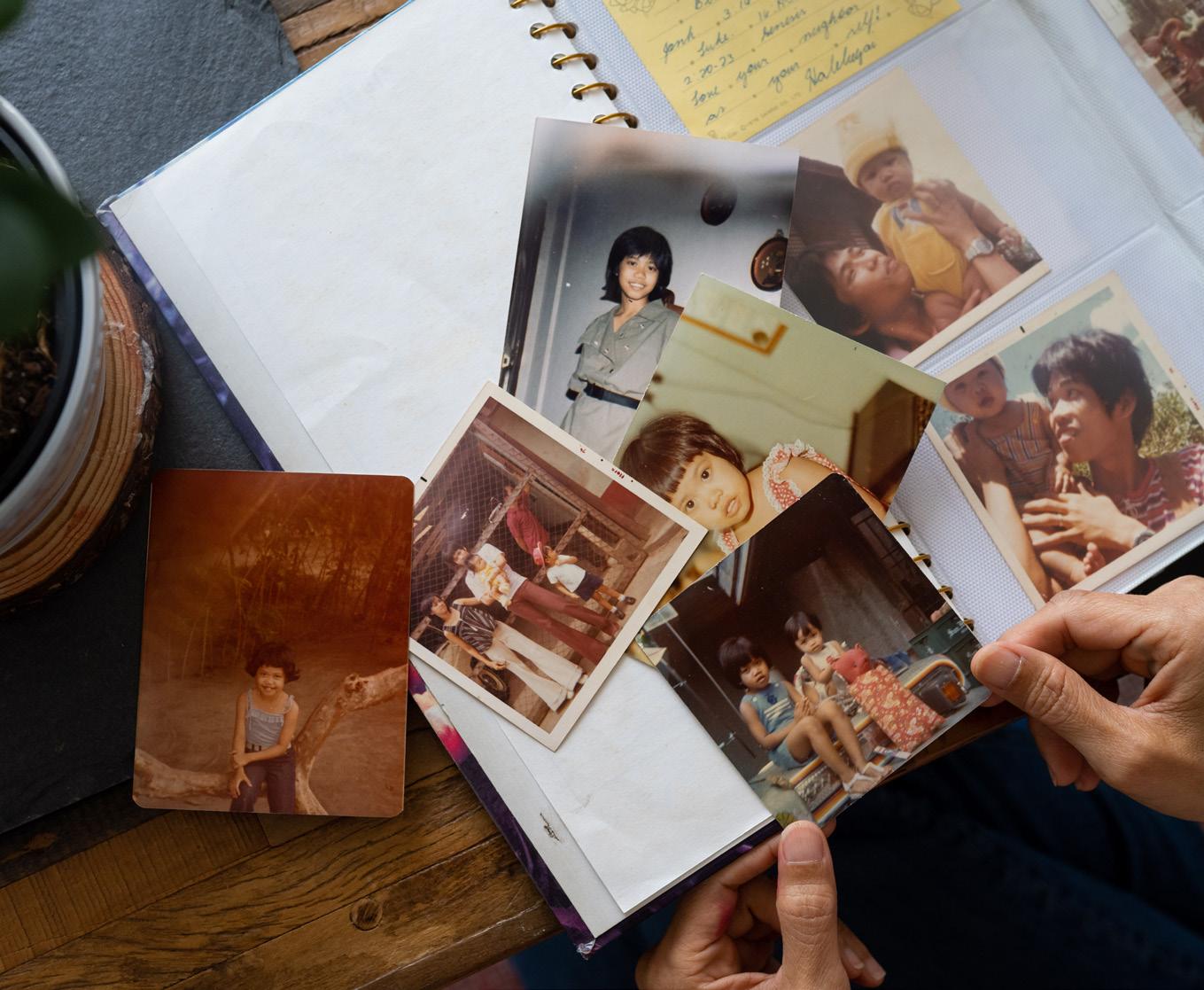
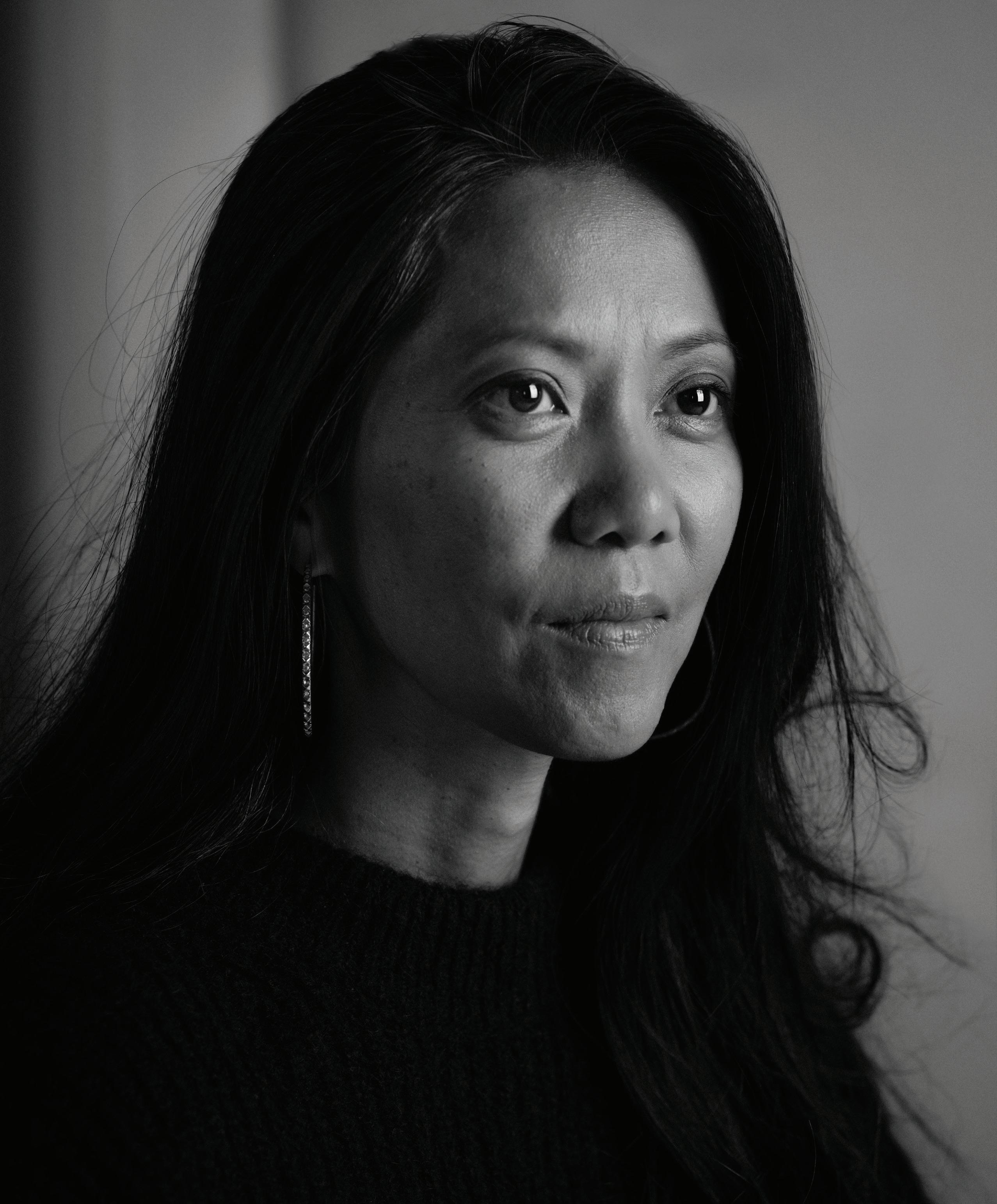
By the time Alexis entered high school, she was living with a different aunt. But her reality was about to change even more. Her mother had been dating an American named Willard and was finally able to procure a divorce in Hong Kong. They married, and the new family moved to Las Vegas.
“We were so, so happy. We went to the United States thinking that life would be better. And in the beginning, it was very nice. I had my own room and my own bed. But then it wasn’t as good as we thought it would be. [Willard] and my mom had issues. They would fight and they would fight and they would fight. It was just chaotic. He was not nice to her … then she stopped coming home.”
So, Alexis left to forge her own way, obtaining her GED and enrolling in community college to study business. “I had to support myself … I was always working a few jobs.” A secretary by day and cocktail waitress by night, she met her first husband at a pool hall where she worked. Their relationship progressed quickly. “We started dating, we got married, we moved to Oregon — bam-bambam.” A baby boy named Parker came next. But just three months later, her husband announced that he was leaving. He’d found someone else. “I called my mom,” she says. “I didn’t know what else to do.” Blindsided, Alexis returned to Las Vegas with Parker and one suitcase, leaving everything else behind.
“I started working three jobs. I was working at a bank, cocktailing at a rinkydink Filipino cocktail bar, and working for my aunt on weekends. I was getting really depressed … I was 24 with nothing.” But she did have a dream: to be a real estate agent. She wrote it down — I want to be a Realtor — along with a plan to get out of her current situation. A few years later, she achieved that goal and became a licensed real estate agent and loan officer.
“I was making really good money,” she remembers. “From driving a Yugo, now I had a Porsche. I had five houses and was renting them.” It was 2007 and life was good — then the mortgage crisis hit. “I lost everything. No one was buying houses; no one was doing loans. I didn’t know what to do or how to financially support my son.” With nowhere to live except her car, Alexis made the excruciating decision to send Parker to stay with her sister in Arizona.
Once again, she had to create a different path forward. She heard about the government’s new mortgage modification program and threw herself into learning how it worked. “I was like, I can do that. I know real estate, I know loans. I can do modifications. How hard can it be?” She made Starbucks her office and began calling her old clients, many of whom were now losing their homes. “I start saving houses and start to get my life together. I get Parker back.”



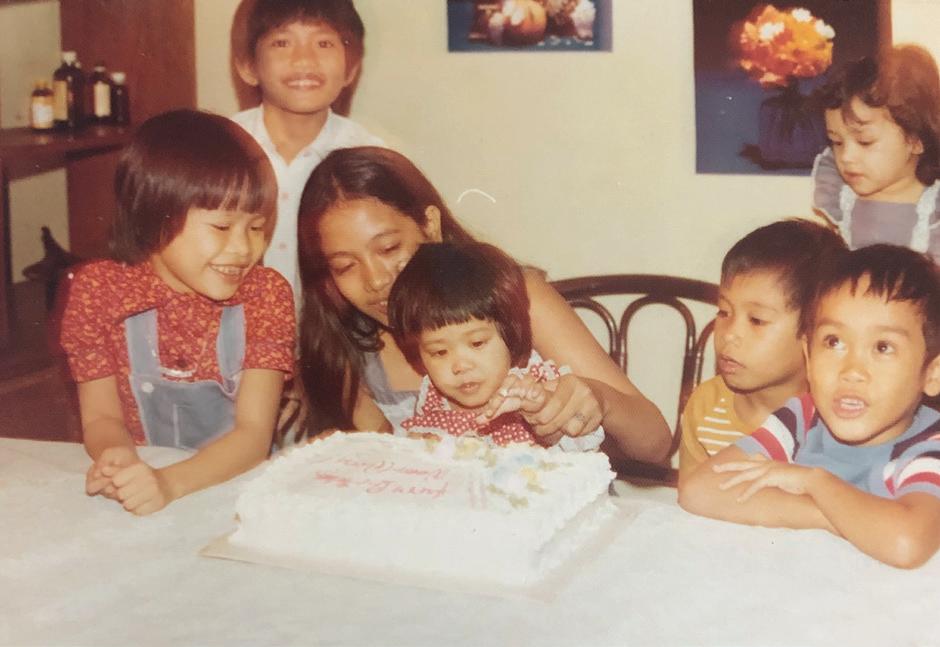
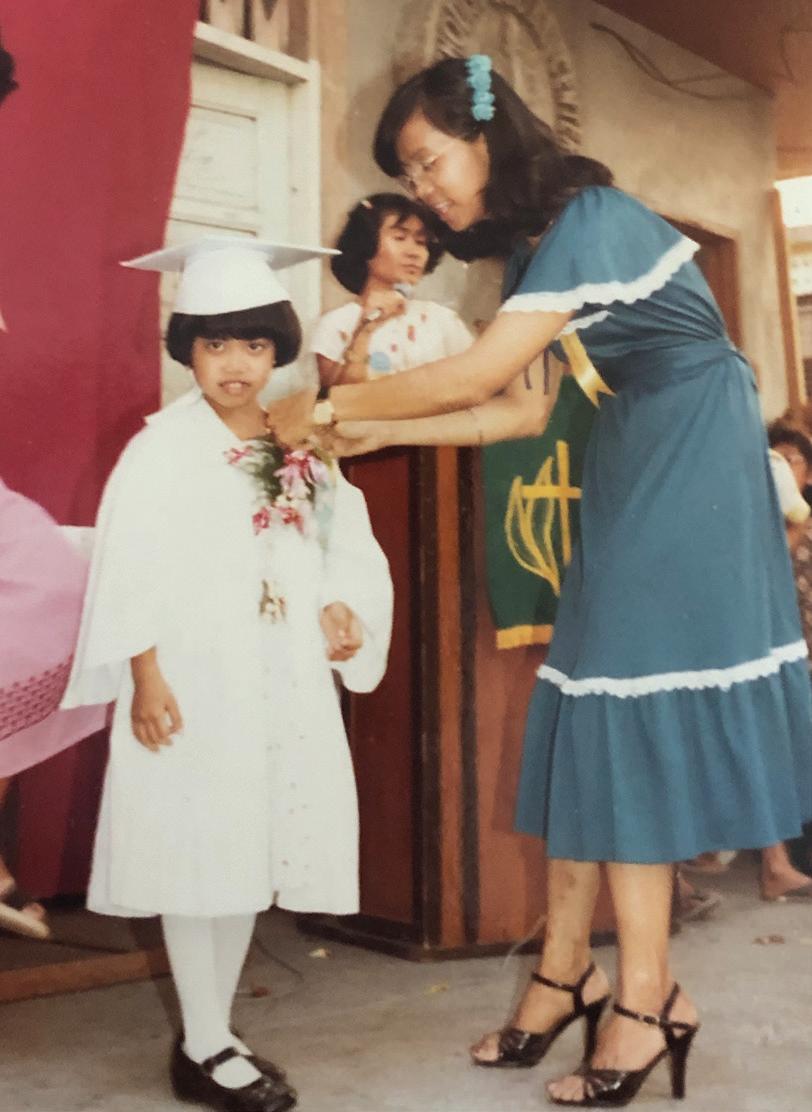

Alexis hadn’t just found a new livelihood, she’d also found Dan, whom she would later marry. But first — her future as a baker was about to begin. Parker was turning 13, and she wanted to make him a birthday cake, so she bought a chocolate mix and a plastic tub of icing. “I made a flat sheet cake, then I took a spoon and scooped all the frosting out of the container and slapped it on there.” She wrote “Happy Birthday, Parker” in blue lettering and then stepped back to admire her handiwork. “It was the ugliest cake I had ever seen,” she says. “It was like a 5-year-old made it. It made me cry.” Parker saw no problem with the cake and devoured it. “But I’m the kind of person that I know I can always do better with anything I do, and I told Parker, ‘Next year I will make you the best, most beautiful cake you’ve ever had.’”

Dan bought her a thick pastry cookbook from Sur La Table and Alexis dove in. “From beginning to end, I baked everything. It showed you how to make croissants, cakes — everything. After I did that, I called myself a pastry chef.” By Parker’s 14th birthday, she was opening a gourmet bakery in the family’s new home of Orange County, California. Business boomed; Alexis was baking 500 cupcakes a day, and soon she had another kind of bun in the oven. Then tragedy struck.
“Two weeks after we found out the baby was a girl, we lost her. I was five months pregnant,” she says, her voice trembling. “It was very hard.” The doctors called it “a fluke,” but Alexis couldn’t accept it. She and Dan were young and healthy. They didn’t smoke or drink. After stumbling on an article about toxins in our food, she started researching the benefits of an organic lifestyle and went all-in, from her cooking to her clothes. Her son Aiden arrived shortly after and so did her new bakery, Sweet Frosted Confections.
Launched after her moving to Texas in 2017, Sweet Frosted Confections offers organic desserts along with gluten-free, egg-free, dairy-free and vegan options. Alexis’ exquisite artistry ranges from whimsical bouquet cakes to truffles with sleek corporate logos. She makes hot cocoa bombs, French macaroons and perky fondant farm animals — and she learned it all on her own, reading cookbooks from the library and YouTubing “everything.” When the Food Network called in 2019 to ask Alexis to appear on “Christmas Cookie Challenge,” it had only been six months since she started decorating cookies. She accepted. “I don’t have formal pastry schooling. Some people say you can’t call yourself a pastry chef unless you went to pastry school. But for me, it’s what you think you can do. The way I saw it was: If she can do it, if he can do it — I can do it.” Most recently appearing on Food Network’s “Gingerbread Championships” late last year, Alex bakes because it’s “beautiful” and it helps to calm her mind. “I’m always thinking. But when I’m baking, I’m focused on the buttercream,” she says. “And I love baking because it has a beginning, a middle and an end. I love to clean, too … I see something so messy and so dirty and then so clean right after. There’s an end to it.” But there’s no end to Alexis’ aspirations. “Why? We’re in a country where anything is possible. I came from a third-world country where when you’re a certain age, by the time you’re 30 or 40 — you’re done. We’re in a country where you could be 80 or 90 years old and still learning. I’m 47 and I just started learning how to play the violin. You can be anything.” Perched beside her cookbooks, a bright pink violin stands ready for her next lesson, a testament to her willingness to face new challenges — and to conquer them through hard work, tenacity and the sheer strength of spirit gained from decades of ups and downs. From the brothel to the bakery, Alexis is more than a pastry chef; she is an inspiration to face life’s many obstacles with a can-do attitude — and a cupcake or two.
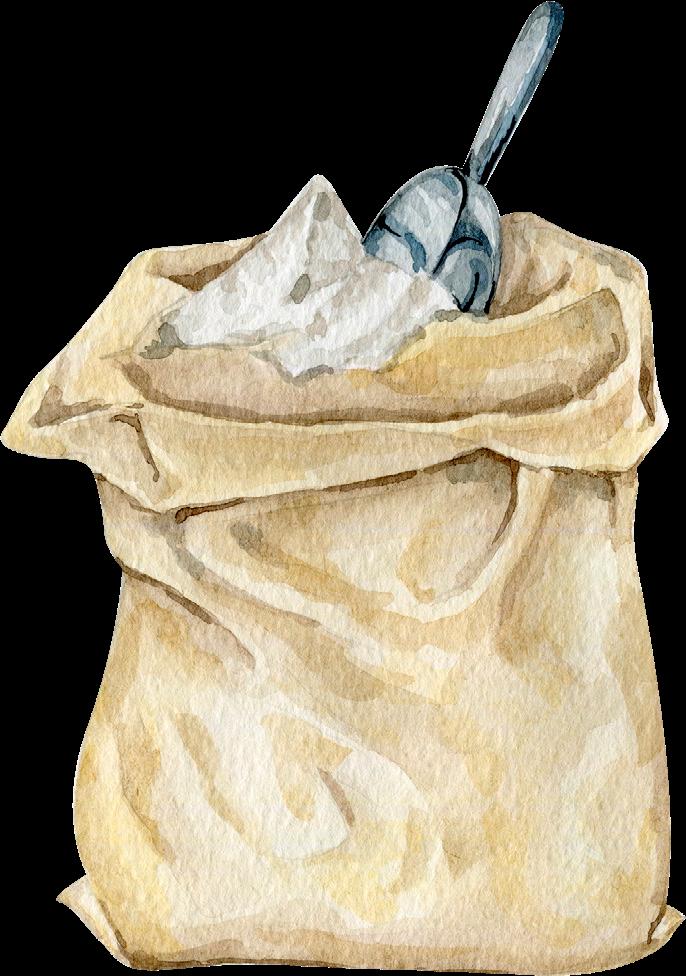

Her A League of Own
Thirteen-year-old Ella Bruning is only the 20th girl to ever play in a Little League World Series, but gender isn’t really a factor.
By Jennifer Casseday-Blair
Ella Bruning finished the 6-0 win with two hits and scored a run,
becoming the third girl in Little League World Series history to have a
multihit game. She is the starting catcher for the Wylie Little League team of Abilene. Jokingly referred to as “Ella and the Fellas,” the team competed in the LLWS in August. In the team’s first game of the tournament, Ella made history.
For the Bruning family, baseball is in the blood. Bryan Bruning, Ella’s dad, is a coach for her team, and brother Dillon plays outfield and second base for Wylie. Ella’s older brother, Collin, played in the organization as well and was the inspiration for Ella joining the team. “My entire family is extremely competitive. You should see us on board game night. There is a lot of yelling. It gets loud,” Ella says.
Ella has an ability to block pitches in the dirt and has extraordinary arm strength. While playing in the LLWS, Ella was struck by a foul ball on her knee. She was checked by the medical staff, and she begged to remain in the game. Ella went on to block the next three pitches into the dirt with her chest. Her stellar performance caught the attention of Major League Baseball. The organization posted a video on Instagram of Ella blocking a ball with her chest and then ripping off her mask while chasing it down and throwing the hitter out at first. They called Ella “a beast.”
On the field, Ella says the fact that she’s a girl isn’t a big deal. “My teammates are all really supportive. When we are playing, gender just doesn’t matter. Outside of the game, we are all friends. We all grew up together and live in the same town, so we’re really close,” she says. There are still naysayers who criticize girls playing baseball, pointing out that softball is a better fit. But Ella isn’t having any of that. “Sometimes I see comments in posts or people saying negative stuff about things I’ve posted, but I try not to let it affect me. It would be easy to let it bring you down and affect your self-esteem, but I believe I’m good enough. And that’s all that matters,” Ella says.
She isn’t just a baseballer — she plays softball and volleyball. When she’s not at morning and evening practice or in school or snacking on Dilly Bites pickles during and after her games, she’s watching her brothers play sports. Her favorite team is the Houston Astros, and her favorite subject in school is math because, she says, “I find it really easy.”


L U C Y

By Jocelyn Tatum Photos by Gracie Ortiz
She isn’t the only little girl on her court tucked inside an historic Fort Worth neighborhood. There are a few others. But she would say the reason she plays with boys is because there are only boys on the court to play with. Or, only boys play sports as competitively as she does at her age. “The girls that are on my court do not play sports, and I am one of those girls that plays sports all the time,” Lucy Ridenour says. If Lucy were to play softball with all of the other girls, she would be separated from her closest friends and a sport she prefers. “For this reason, I play baseball.”
The 10-year-old has bright brown eyes, brown curls and freckles. She’s almost always smiling. The only time she isn’t smiling is when one of the six boys she plays baseball, basketball or football with on the court adjusts the rules to their advantage because she’s faster and often more agile. She’s got a strong arm and even stronger game.
When it was time for her best friends on the court to sign up for baseball, undeterred by being the only girl on the team, she decided to join them. None of her friends were playing softball. “I play baseball because I wanted to — and because mostly everybody on the court is a boy and girls don’t play baseball—they play softball, and softballs are too big for my hand, and I don’t like throwing underhanded,” she says.
Last year Lucy played basketball as the only girl on the team, so this isn’t her first adventure into sports on an all-boys team. When she asked her mom if she could do it, her mom didn’t flinch. “I knew she could handle it, and I knew she would shine among the boys,” Katherine Ridenour says. “I love her confidence, and I wish I had more of it.”
Lucy has little hands and is smaller than most girls her age, but when she’s out there playing on a field full of boys, she doesn’t question her ability and skill. “I feel I am better than all of the boys because I have an advantage because I have been playing sports all of my life,” she says.
She would rank herself as the second-best player on the team of about 10 boys. Other boys on her team agreed. “Definitely, she’s one of the top three on the team,” teammate James Boggess said.
Lucy heard that when she goes to high school, she may have to switch to softball, but if given the choice, she would continue to play baseball with the boys. “If I am still this athletic, of course,” she says. But her friends on the court don’t doubt she will be, because she is one to watch.
SCAN THE QR CODE to WATCH an interview with Lucy Ridenour.
-LUCY’S MOTHER, KATHERINE RIDENOUR
STAGECOACH Mary
Meet the feisty frontierswoman with a fighting spirit who refused to play by the rules
By Shilo Urban
Illustrations by Conny Gonzalez
Everyone knew not to mess with Stagecoach Mary in 1890s Montana, a largely unsettled wilderness with ferocious weather and unforgiving terrain. Here on the edge of civilization, Mary Fields drove her stagecoach beyond the boundaries of age, race and gender. A whiskey-drinking crack shot who smoked and cursed continuously, Mary made her home in a quiet mountain monastery. Fond of children and physical altercations, she was a beloved babysitter who also had a standing $10 bet that she could knock out any man with a single blow. She never lost.
Heavily armed at all times, Mary fought off wolves and bandits as the first African American female star-route carrier for the United States Postal Service. Standing 6-foot-2 and over 200 pounds, she sat on top of her stagecoach wearing a men’s hat and jacket, with a cigar in her mouth and a rifle close at hand — and a .38 Smith & Wesson strapped beneath her apron. She crafted pretty boutonnieres from her garden for the local baseball players to wear at every game, and anyone who spoke ill of the team could expect a punch in the mouth.
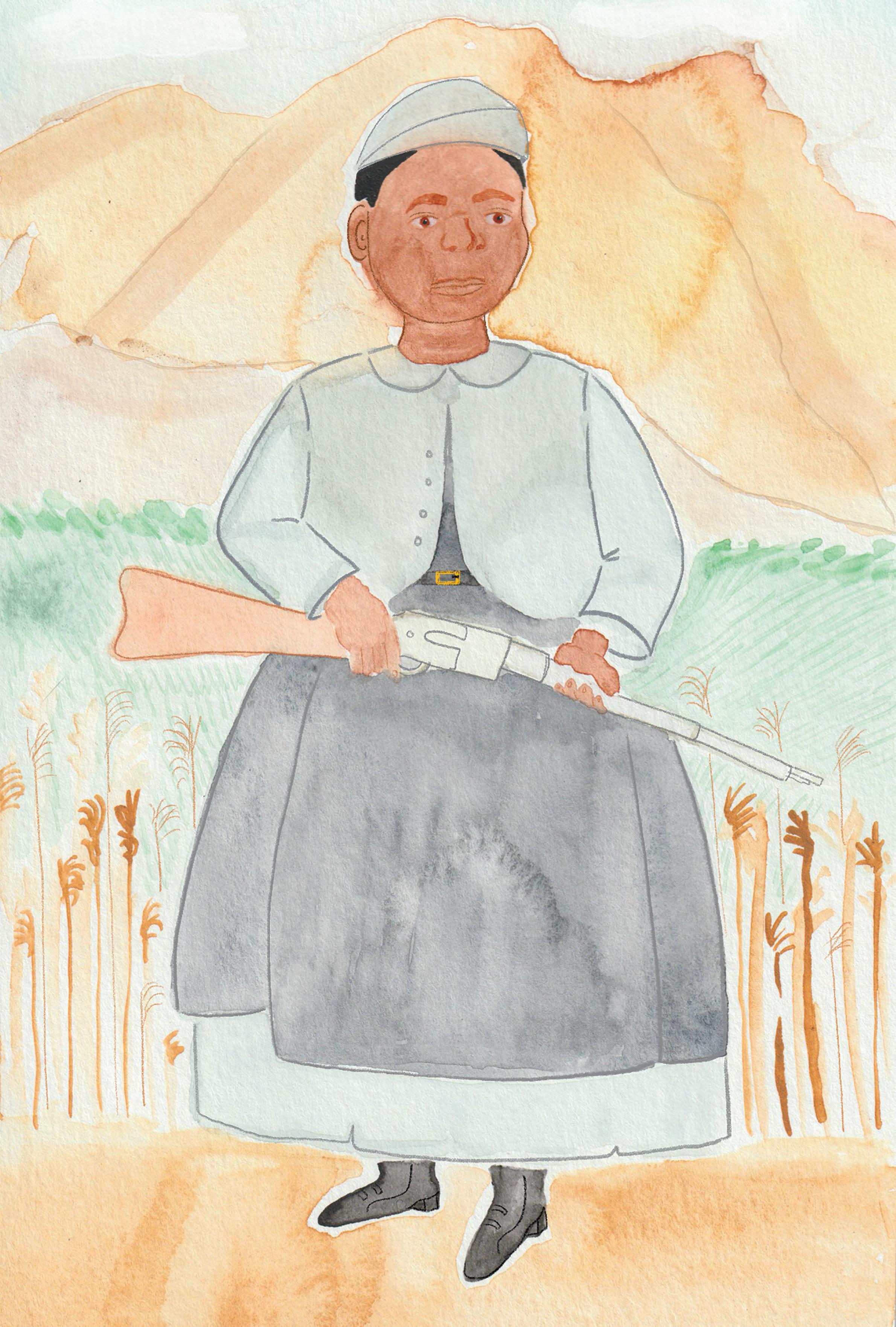
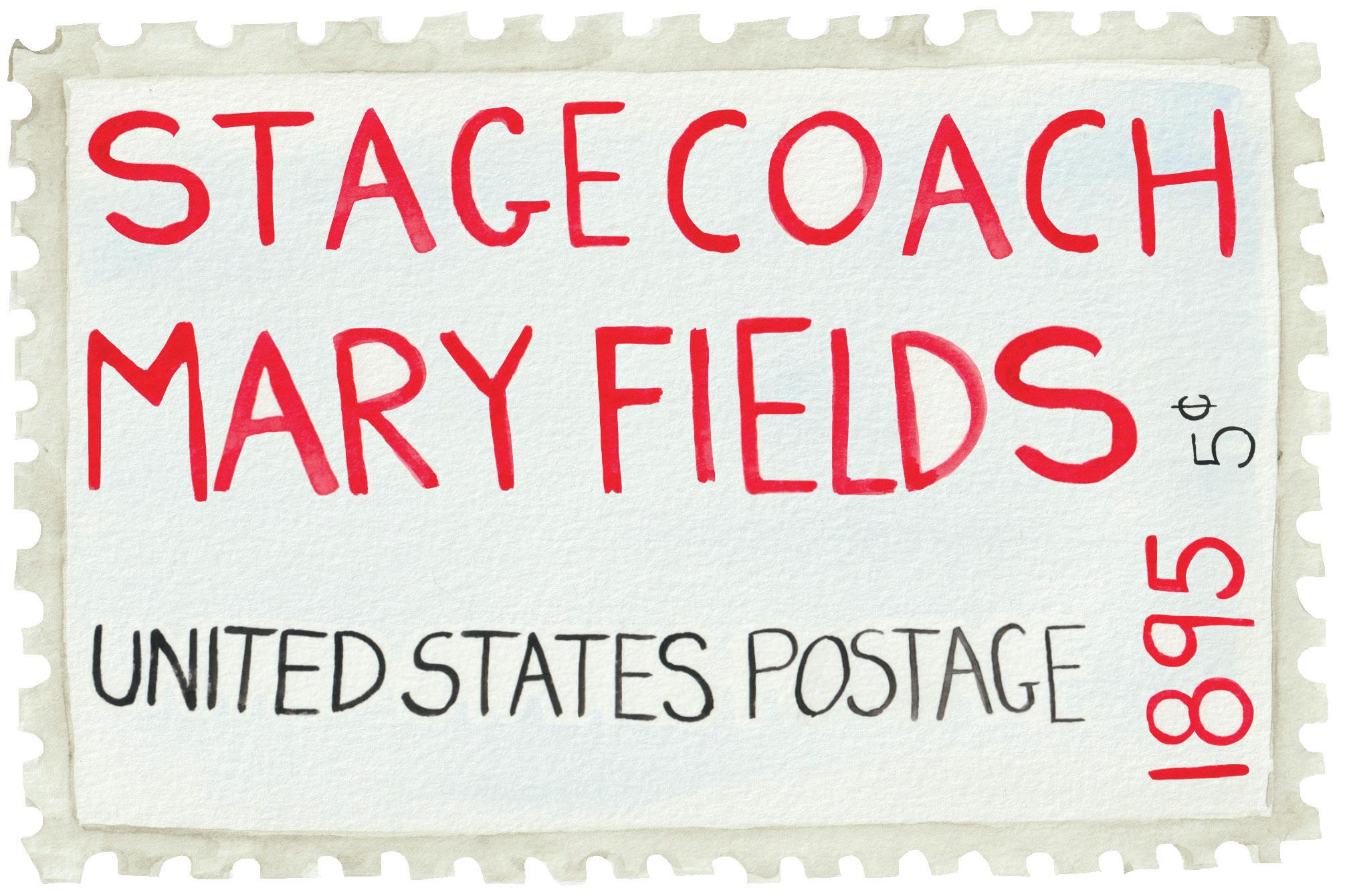
Mary was born a slave in Tennessee around 1832. Unlike many enslaved people, she learned to read and write. Freed after the Civil War, she worked on Mississippi River steamboats as a laundress and chambermaid. At some point, she became friends with an Ursuline nun named Mother Amadeus Dunne. Mary left the steamboats to join Mother Amadeus at a convent in Ohio, announcing upon arrival that she needed “a good cigar and a drink.” Her ornery nature and habitual profanity ruffled plenty of nuns’ feathers. But she proved her worth as a groundskeeper, keeping the abbey in shipshape through hard physical labor and sheer force of personality. “God help anyone who walks on the lawn after Mary has cut it,” one sister remarked.
But Mary’s destiny was farther west. Mother
Amadeus had relocated to St. Peter’s Mission, an isolated outpost 15 miles west of Cascade, Montana. She fell deathly ill of pneumonia, and Mary traveled 1,700 miles to nurse her friend back to health. The West suited Mary. She settled in at St. Peter’s as a forewoman, handling “men’s work” — maintenance and repairs, hunting and chopping wood. She raised hundreds of chickens and tended the massive garden. She coordinated supply deliveries, a critical task in a land where survival was still precarious. Yet she accepted no pay, only room and board. With no contract, she could work on her own terms, coming and going as she pleased.
Although Mary played an indispensable role at the mission, she was never really accepted as part of the community. Her skin was a different color. She was “difficult.” She bickered. She made people uncomfortable. She had the “temperament of a grizzly bear” — not to mention a hearty appetite for hard liquor and homemade cigars. After 10 years, Mary’s ill-fitting disposition finally caught up with her when an argument with a co-worker escalated into gunplay. It was the final straw for the bishop, who kicked her out.
Mary moved to Cascade and adopted a lifestyle that shocked 19th-century sensibilities. She was a single woman who did not depend on a man, a family, or the church for support — and for three decades, she was the only African American in the area. She worked odd jobs. She talked politics and sports. She socialized with men at saloons, enjoying a special exemption from the law banning women from such establishments. Always ready to fight, Mary became known as one of the quickest draws around. She twice tried her hand as a restaurateur, but both businesses failed because she fed the hungry whether they could pay or not.
But in 1895, Mary found her calling as a star-route mail carrier, an independent contractor for the U.S. Postal Office. She was 60 years old. For the next eight years, she delivered packages by stagecoach across the mountainous countryside — and she never missed a single day of work. She drove rocky backtrails on a 34-mile loop from Cascade, transporting vital supplies to remote settlements including St. Peter’s. She battled searing summer heat and wild winter blizzards with temperatures 45 degrees below zero. When the snow became too deep for driving, Mary strapped on her snowshoes and delivered the mail on foot.
She earned a reputation for reliability and speed, and for gunfights and fisticuffs. According to the Great Falls Examiner newspaper, Mary had broken more noses in Central Montana than anybody else. Outlaws proliferated in the region, but she was never robbed; the would-be thieves were too intimidated. Wolves presented another constant threat. One night, a pack of the hungry animals spooked Mary’s horses and overturned her coach, which was loaded with precious food for the mission. She fended off the wolves for hours until daylight arrived.
Mary retired in 1903 and ran a laundry service out of her home, her hearty temperament intact. Well into her 70s, she cold-cocked a man in the middle of the street — he had refused to pay his bill. She became the baseball team’s biggest booster and an in-demand babysitter who spoiled the children with candies and treats. A respected public figure and minor celebrity, Mary ate free meals for life at local restaurants. Schools closed on her birthday to celebrate. When her house burned down in 1912, the townspeople rallied around her, donating the
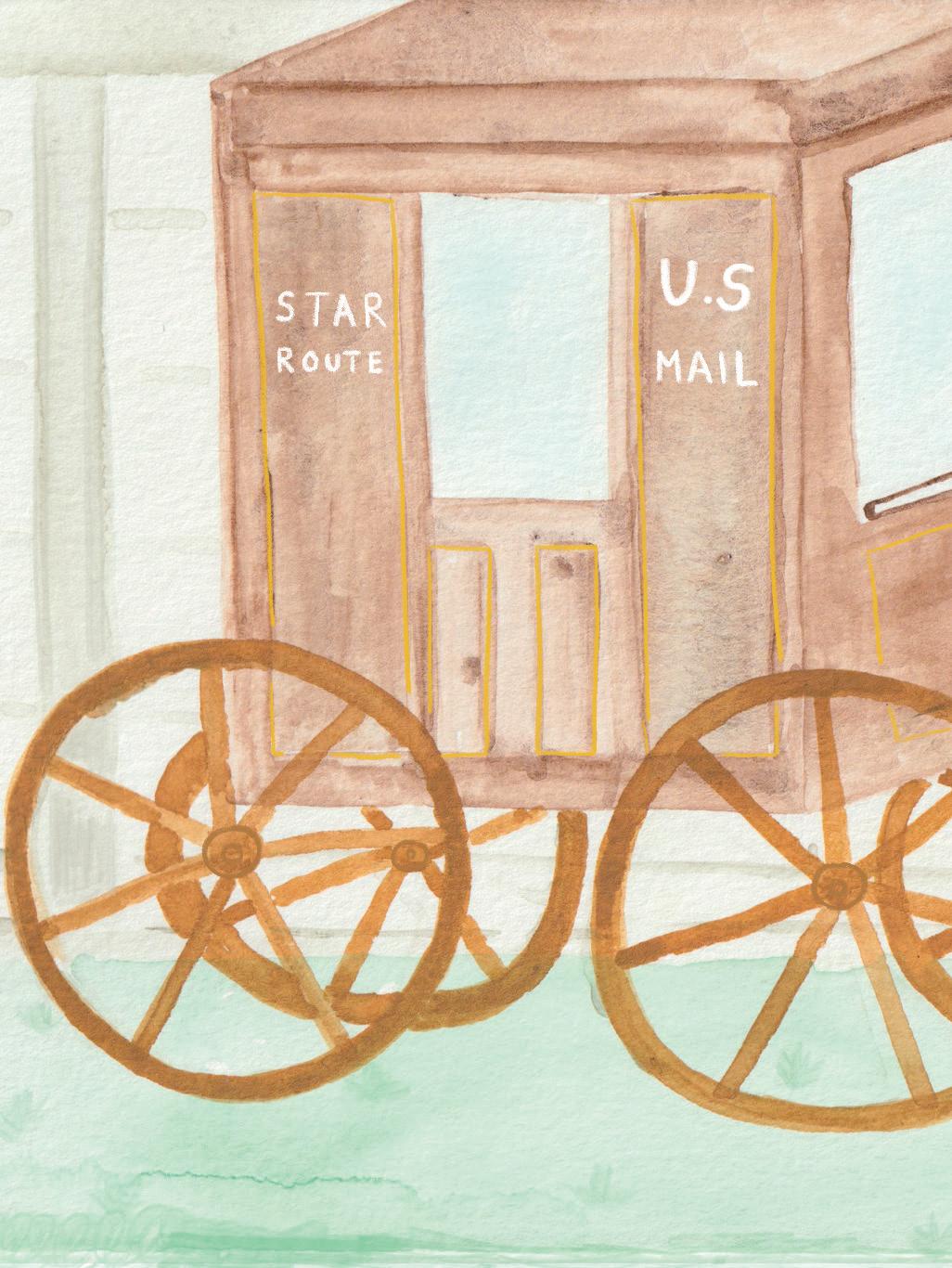
lumber and labor needed to rebuild. Mary died two years later, and her funeral was one of the biggest in Cascade’s history. A simple stone marks her grave, which is located at the foot of the path where she drove her stagecoach through the mountains — and right into Wild West legend.
If Mary’s story seems tinged with the sparkle of a tall tale, it probably is. Most of what we know about her comes from anecdotes and oral histories. Over the decades she has developed into a folk hero, the subject of multiple plays, movies and books. In one early rendition, she wears buckskin and carries a live eagle on her arm. The largerthan-life frontierswoman has become a symbol of freedom and self-sufficiency, a rough-and-tumble individualist with the grit and the guts that made America. But Stagecoach Mary is much more than a myth. She is a human. A woman. An African American. We can hardly imagine how Mary felt out there on the rugged trails, living beyond the boundaries and leaving behind a legacy that inspires us still today.
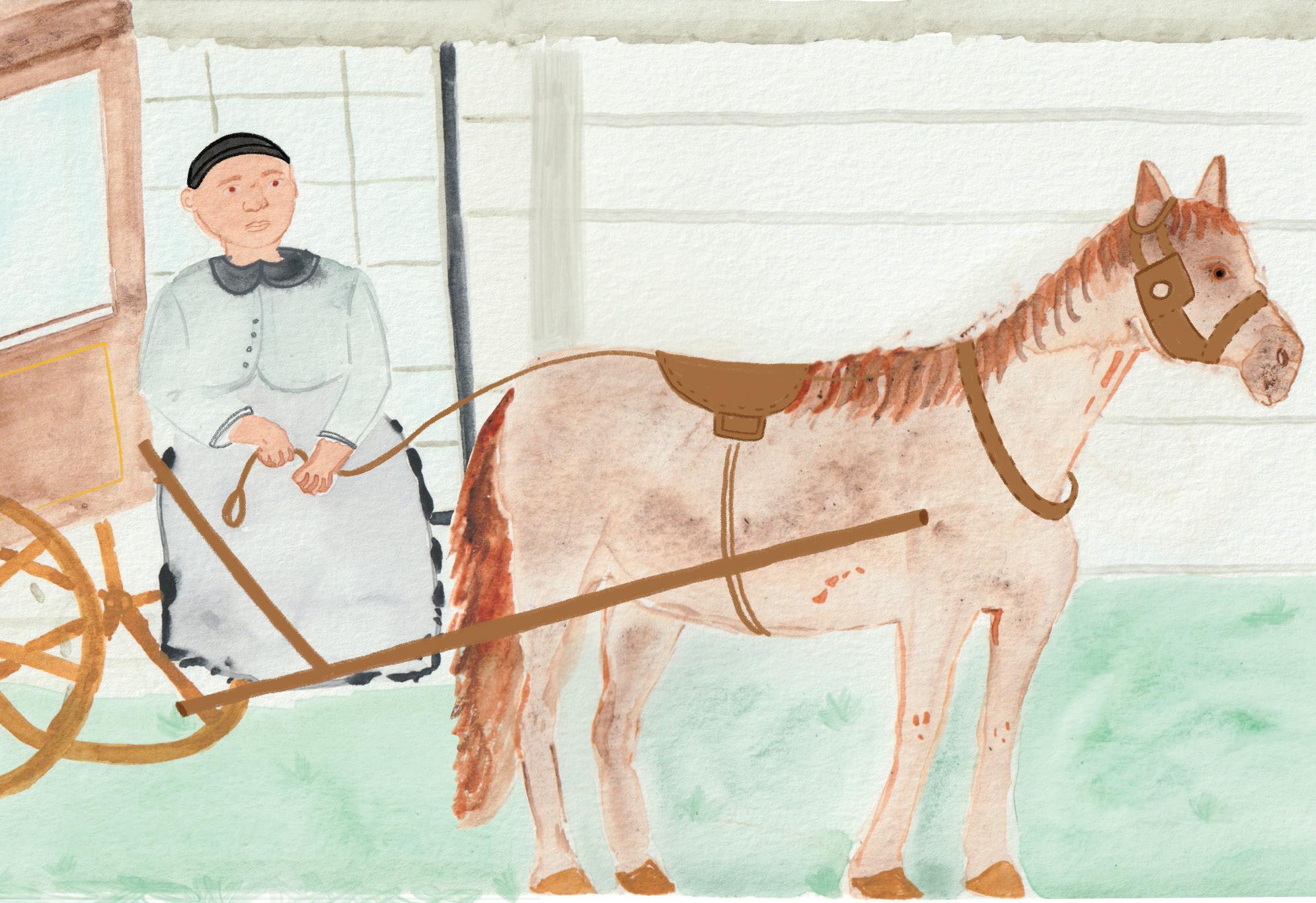
’Raina and Roger Forever’
By Amanda Myers Brotherton
Illustrations by Amber Davis
Raina and Roger were the
very best of friends. Once they met, Raina could never imagine life without Roger, and Roger was utterly loyal to Raina. One cold November morning, Raina was walking through the park near her house, and fate shined upon her. Roger came waltzing down the footpath with a broad grin stretched across his kind face. Raina was never one to initiate conversation or meetings with strangers, but Roger’s amiable and positive attitude was so evident, she couldn’t help herself. She stopped and said, “Hello,” and the rest was history.
Back then, they were both young, free, and full of vigor. That is what drew Raina to him so quickly. He seemed to possess endless energy, and his happiness was contagious. His demeanor was always silly and fun-loving in those days. Roger quickly became Raina’s outlet for pure fun and friendship; they began spending every free moment together, becoming roommates in the process. They both loved the outdoors; they could spend hours hiking trails and observing the wildlife and plants they encountered. Raina preferred to bring her bird reference books along and attempt to identify the various species she came across. She moved slowly through wooded areas, hoping to witness the bright yellow flutter of a New World warbler or hear the melodic calls of the songbirds. Roger, on the other hand, was invigorated by open spaces and bounded down the trails with ease. His joy came from movement and speed, although he would often stop to smell the Indian paintbrushes and purple coneflowers that grew wild in the area. Despite Roger’s tendency to wander ahead, Raina knew he would always wait for her to finish her bird watching.
They had more than a love of the outdoors in common. Roger liked
every kind of food that Raina did. She never had to argue over where to order food or what they should cook. Roger was voracious and never turned down a snack or meal. Raina was not, let’s say, a perfect homemaker. Her kitchen skills were abysmal; it was truly shocking she had survived as long as she had. However, she still enjoyed attempting to create good dishes. Even when Raina knew she had burned the fish and overcooked the rice, Roger never complained or pointed out the obvious fact that she was not a very capable cook. She appreciated his willingness to go along with her ruse. She never felt selfconscious around him. She could burn a meal, wear her ratty comfortable clothes around him, or eat an entire pint of ice cream by herself while they watched a movie, and she never felt judged. He always accepted her for exactly who she was, and she did the same for him.
Raina loved going out with Roger.
He was the perfect kind of social being. He was a quiet presence, yet people gravitated toward him. His pleasant attitude put everyone at ease; he slid into Raina’s friend group easily and was accepted by all. Everyone knew Roger would always be there to provide a warm smile and friendly handshake.
Roger was not like
some males who puff up their chests and attempt to dominate those around them. He was laid-back and calm. The few times he did exhibit aggression, it always revolved around safety. Once, he and Raina were deep in the woods hiking, and an enormous wild pig came rushing across their path. Roger’s first instinct was to get between the pig and Raina. He raised his voice, and the pig quickly disappeared into the thick brush beyond the trail. Raina was surprised at how intimidating Roger had been in that moment, but his quick thinking and effective response were no shock to her. Another time they had been watching a movie late at night, and Roger thought he heard someone outside the house. He pushed out his chest and broadened his shoulders, and when Raina opened the front door, he leaped off the porch and ran in the direction from which he heard the noise. Raina would never run into the night after a perceived threat, but Roger was confident in his abilities and seemed to consider himself Raina’s personal bodyguard, which she appreciated.
As their friendship grew and
time passed, they both matured. Raina became the local go-to girl for bird-watching questions and locations, and Roger threw himself into volunteering at the local hospital in his downtime. They went on trips together, enjoyed great (and sometimes burned) food together, and supported each other in good times and bad. Roger never even cared about the rotating collection of men that Raina had in her life. While she had done an excellent job choosing Roger as her friend, she was sometimes a poor judge of character when it came to romantic interests. Most of the men she dated were too machismo, too focused on themselves to even notice her quirks and talents. She would give them a few chances, but eventually, it often ended with Raina and Roger on the couch together. Raina would cry over another unsuccessful relationship, and Roger would comfort her, knowing her sadness would pass just as it had before. He never tried to “fix” her or tell her to change. He let her make her own choices and was always there to celebrate or commiserate, depending on the outcomes.
Roger was not perfect, of course. He had his flaws.
Raina would often clean up after him, and she could never get him to wipe his feet before walking into their home. He seemed oblivious to his own appearance at times; she would often smooth his hair down with a motherly sweep of her hand and wipe sleep out of his eyes that he had somehow missed. Despite these minor infractions, their friendship was damn near perfect and one for the books. In fact, the only time in their long and mutual association that Raina was ever truly mad at Roger was when he chewed up her favorite pair of running shoes. However, her anger quickly faded away because he had been just a puppy then; he hadn’t known any better.









